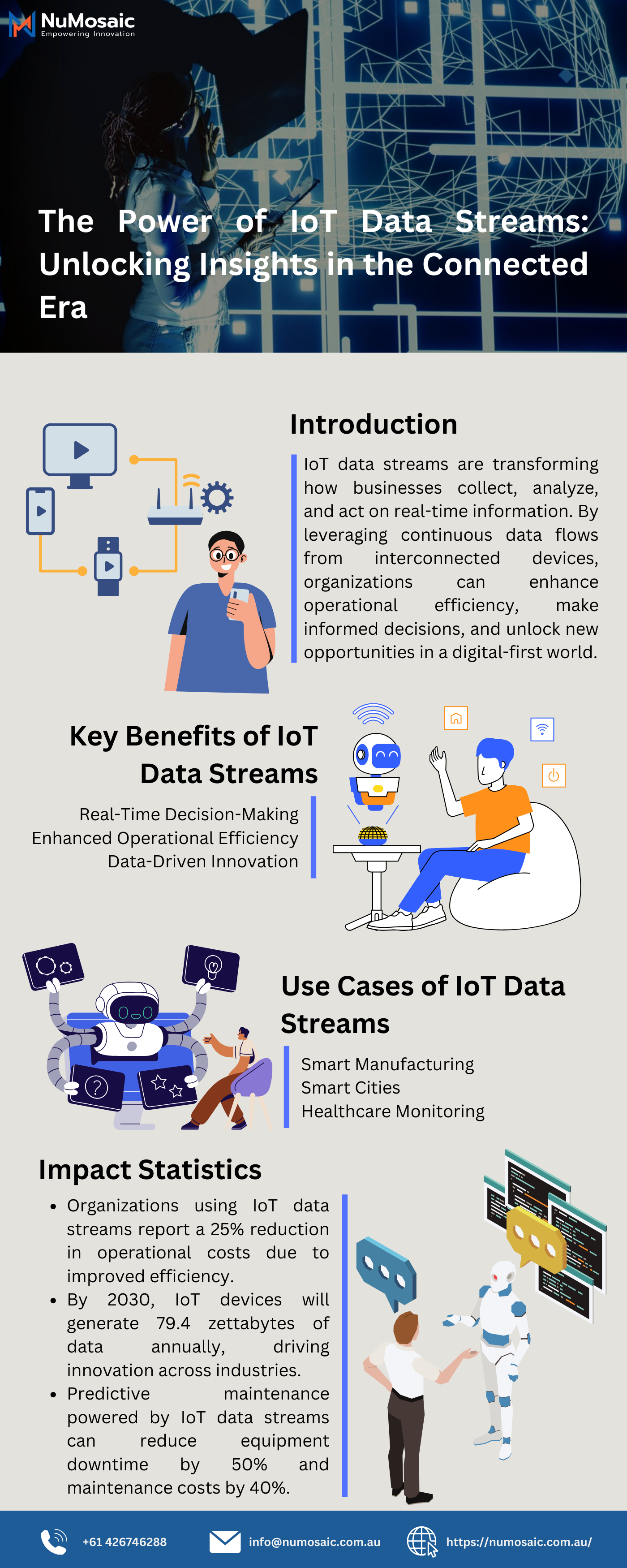The Internet of Things (IoT) has transformed how businesses collect and utilize data. With billions of connected devices generating vast amounts of real-time information, IoT data streams enable organizations to make faster, smarter decisions. This continuous flow of data is reshaping industries by improving efficiency, reducing costs, and driving innovation.
Understanding IoT Data Streams:
IoT data streams refer to the uninterrupted transmission of data from interconnected devices such as sensors, smart meters, and industrial equipment.
Unlike traditional data collection methods that rely on periodic updates, IoT-enabled systems provide real-time insights, allowing businesses to monitor and respond to changes instantly. By leveraging the IoT data stream, companies can improve operational visibility, enhance automation, and optimize performance.
Key Benefits of IoT Data Streams:
One of the most significant advantages of IoT data streams is real-time decision-making. Businesses no longer have to rely on outdated reports to assess performance. Instead, they can analyze live data to identify inefficiencies, detect anomalies, and take corrective action immediately. This capability is particularly valuable in industries like manufacturing, logistics, and healthcare, where timely responses can prevent costly disruptions.
Operational efficiency is another major benefit of IoT data stream. Automated systems powered by IoT reduce the need for manual monitoring, leading to faster processes and lower operational costs. Studies show that organizations utilizing IoT data have experienced up to a 25% reduction in expenses due to improved resource management and predictive maintenance.
IoT data stream also foster innovation by providing businesses with actionable insights. The ability to process and analyze vast datasets allows companies to develop smarter products, enhance customer experiences, and explore new revenue streams. .
Use Cases Across Industries:
IoT data stream are making a substantial impact across multiple industries. In manufacturing, smart sensors monitor equipment conditions and predict maintenance needs, reducing unplanned downtime by up to 50%.
Smart cities rely on IoT data to optimize traffic management, energy distribution, and waste collection, improving urban efficiency and sustainability. In healthcare, IoT-enabled wearable devices track patient vitals in real-time, allowing for early detection of medical conditions and proactive interventions.
The Future of IoT Data Streams:
As technology advances, IoT data stream will become even more powerful with the integration of artificial intelligence, edge computing, and 5G networks. Businesses that embrace these innovations will gain a competitive advantage by enhancing efficiency, improving decision-making, and driving long-term growth.
The era of connected intelligence is here, and IoT data streams are at the forefront of this transformation. Organizations harnessing real-time data’s power will lead the way in innovation and operational excellence.

